
Is it a bird? Is it a plane? Is it another wrapping gown? Yes, it is! It’s the Fitting and Proper Chintz Banyan!
Back in 2020 when I was in Minnesota in a quarantine hotel, proper PPE was in very short supply. The supply was in fact so short that the Mayo Clinic was reaching out to local residents, asking us to sew cloth masks for visitors to use in the hospital, and because we were all sewing the same thing, there was a period of time when it was difficult to buy nicely tight-woven fabrics from fabric stores.
The previous year I had sewn a Robe a la Francaise from an Ikea duvet cover that was so tightly woven it was difficult to get a needle through the fabric, so I reckoned that another Ikea duvet cover might serve me well for masks.
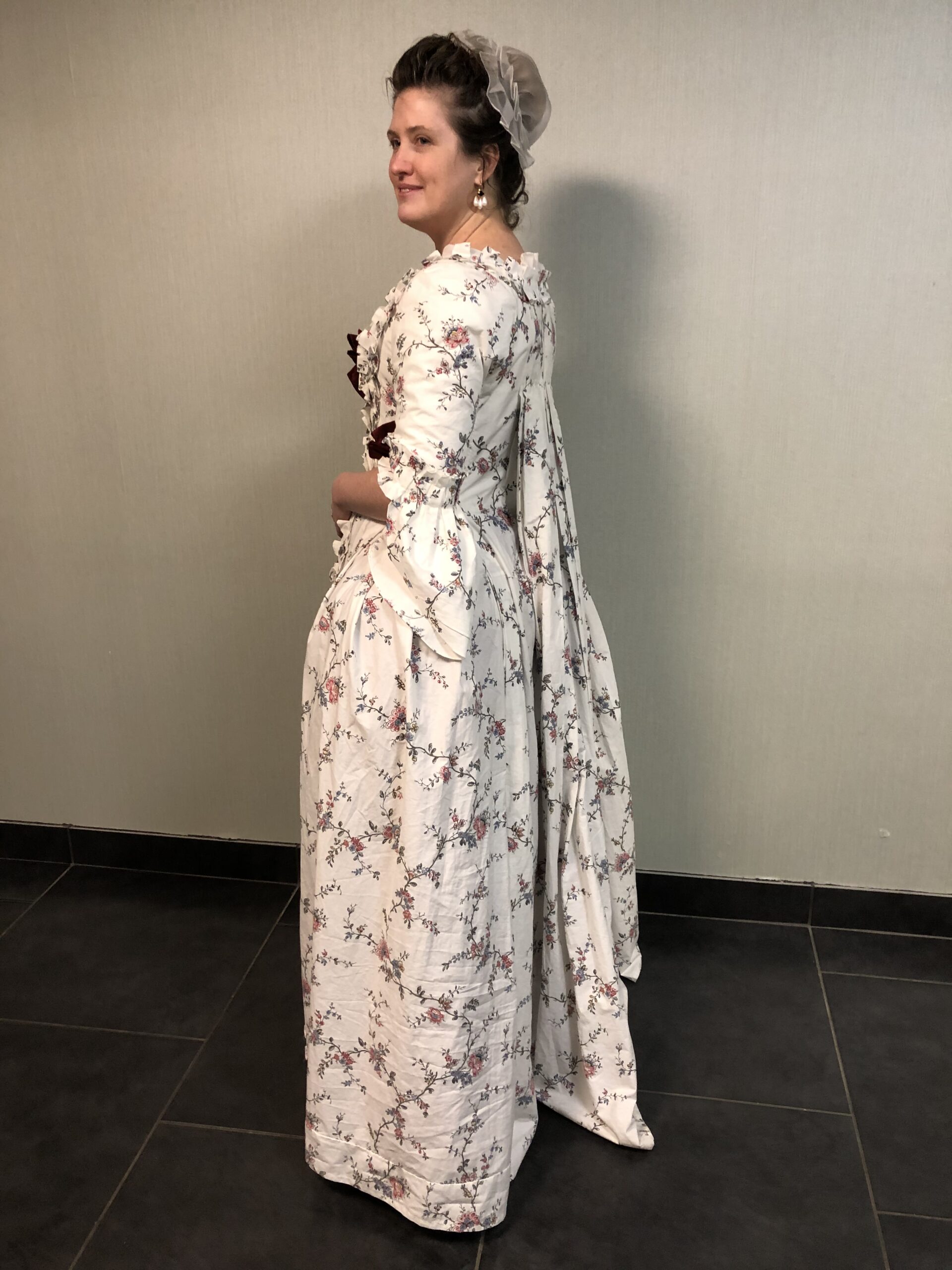
I found one on ebay that looked about right, but when it arrived, it turned out to be made from a very different fabric, extremely loose-woven and unsuitable for masks. I had a lot of it, though. Enough, in fact… for an 18th Century Man’s Banyan. And the floral print was period.

I took the pattern for this chintz banyan from the book Fitting and Proper by Sharon Burnston. The original garment was for a man, but I have very wide shoulders and I didn’t have to make any adjustments to the pattern except to shorten the hem!
Let’s take a moment to talk about Banyans.
The first hurdle is that the garment in Fitting and Proper is a technically a wrapping gown, not a banyan. There are historians who care rather a lot about the distinction between the two (and from a historical perspective they are perfectly correct) but I am a costumer, not a historian, and once in a while, such as when I’m stuck in a quarantine lockdown, I go ahead without worrying too much about where in history who called what what and when.
(Also I’d rather watch Aragorn than argue, so we’re going with Banyan here, okay?)
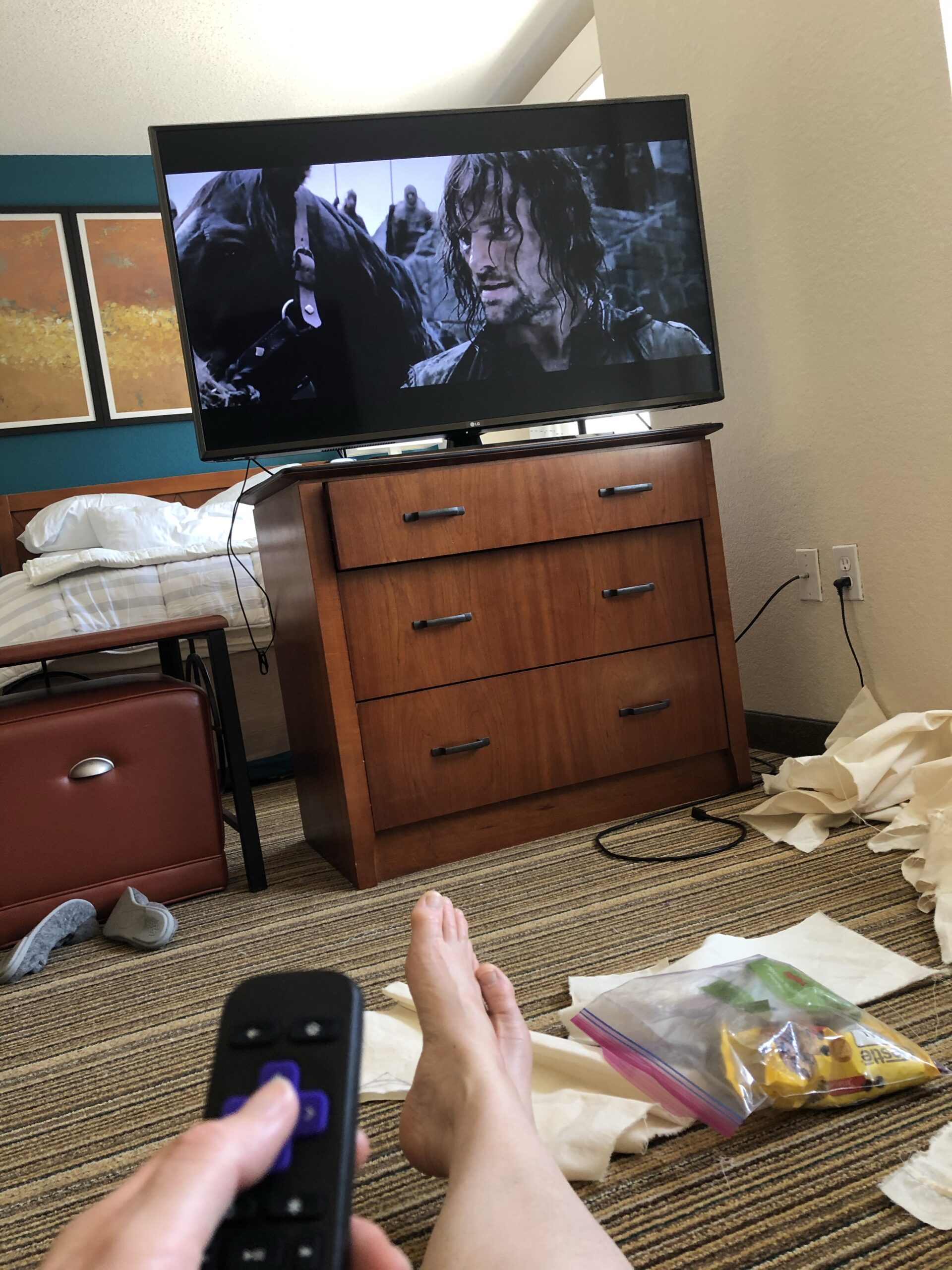
The Cutting:
Making any sort of wrapping gown is about economy and geometry. This garment is basically a big rectangle with a little bit of tweaking to each quadrant.
To start – Lay the fabric out on the floor. (If you’re in a hotel room, finding enough space may be tricky.)
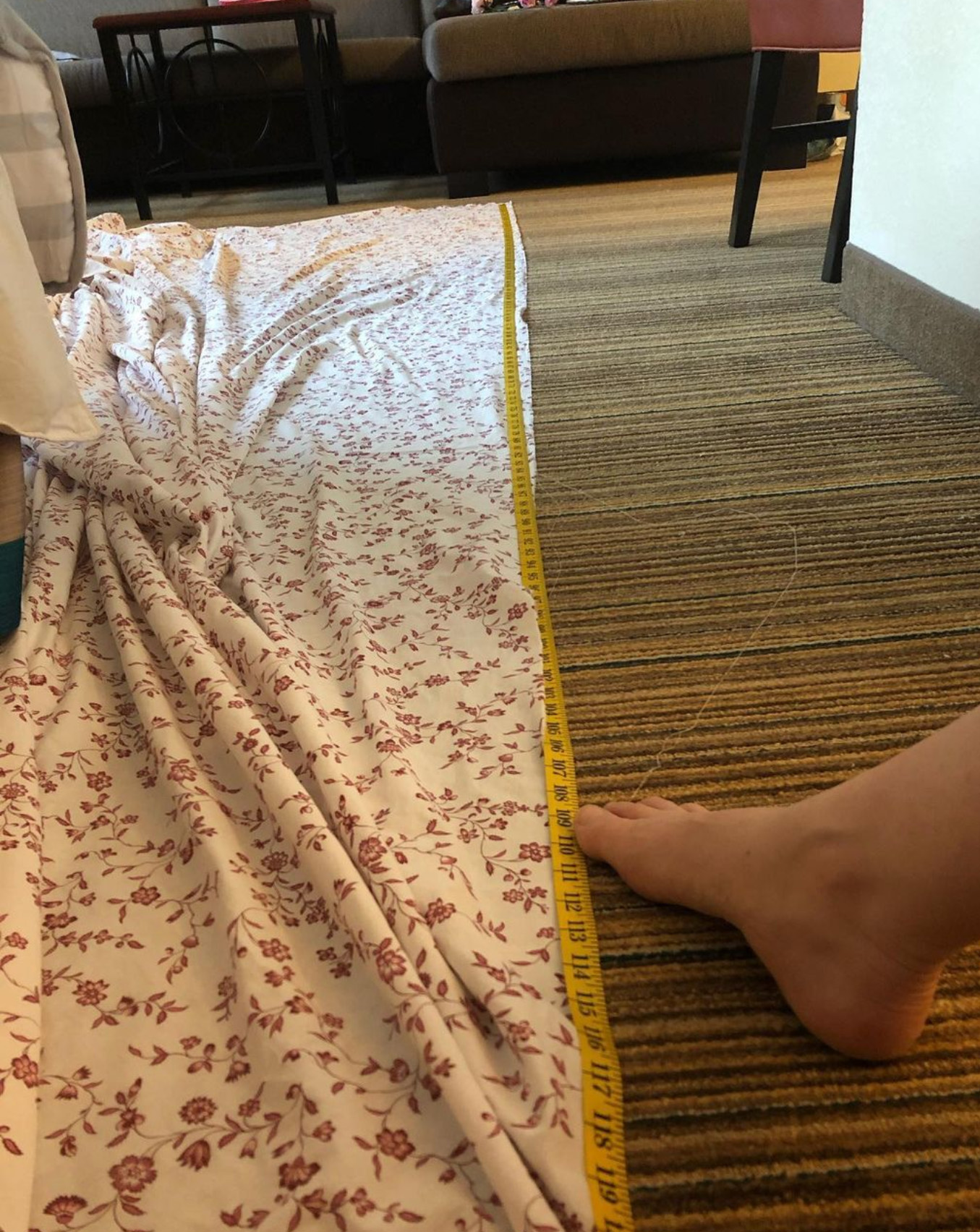
Fold the fabric into quarters and cut the basic banyan shape.

Unfold into long halves and cut the neck.
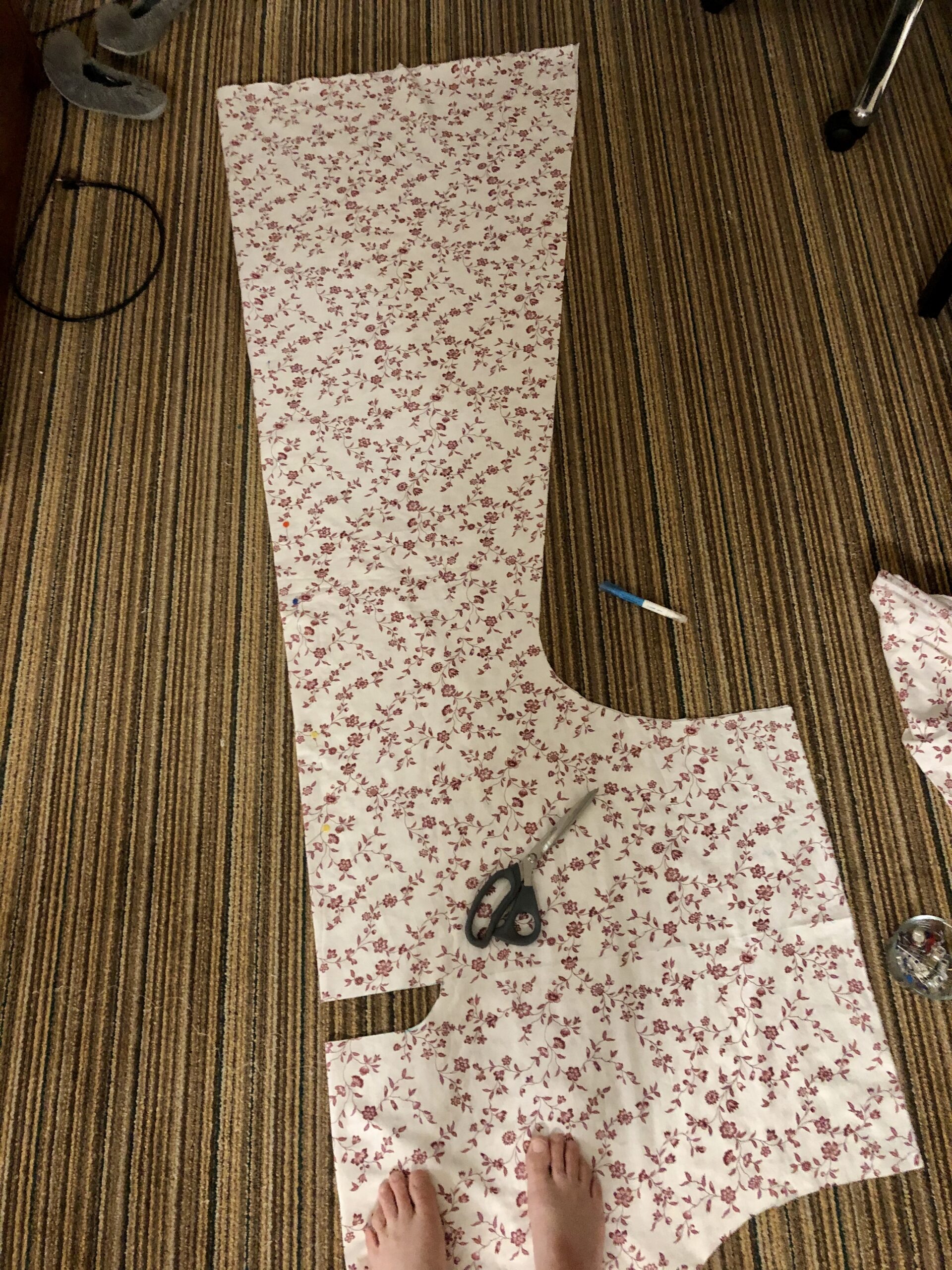
Unfold again and cut the fabric up the center front from hem to neck to make an opening.
If you’re making your wrapping gown with long sleeves, the sleeves you want will be longer than what your rectangle gives you, so you will need to piece them. And on this style of wrapping gown, you’ll also attach a pair of wedge-shaped panels to the center fronts to make the gown hang well over your chests instead of gaping outward (this works for tummies as well.)

The sewing:
Once I’d cut the basic shapes and extra sleeve pieces, I cut a rectangle for a yoke. I sewed up the long side-and-underarm seams of the gown, and then I pleated the neck into the yoke.
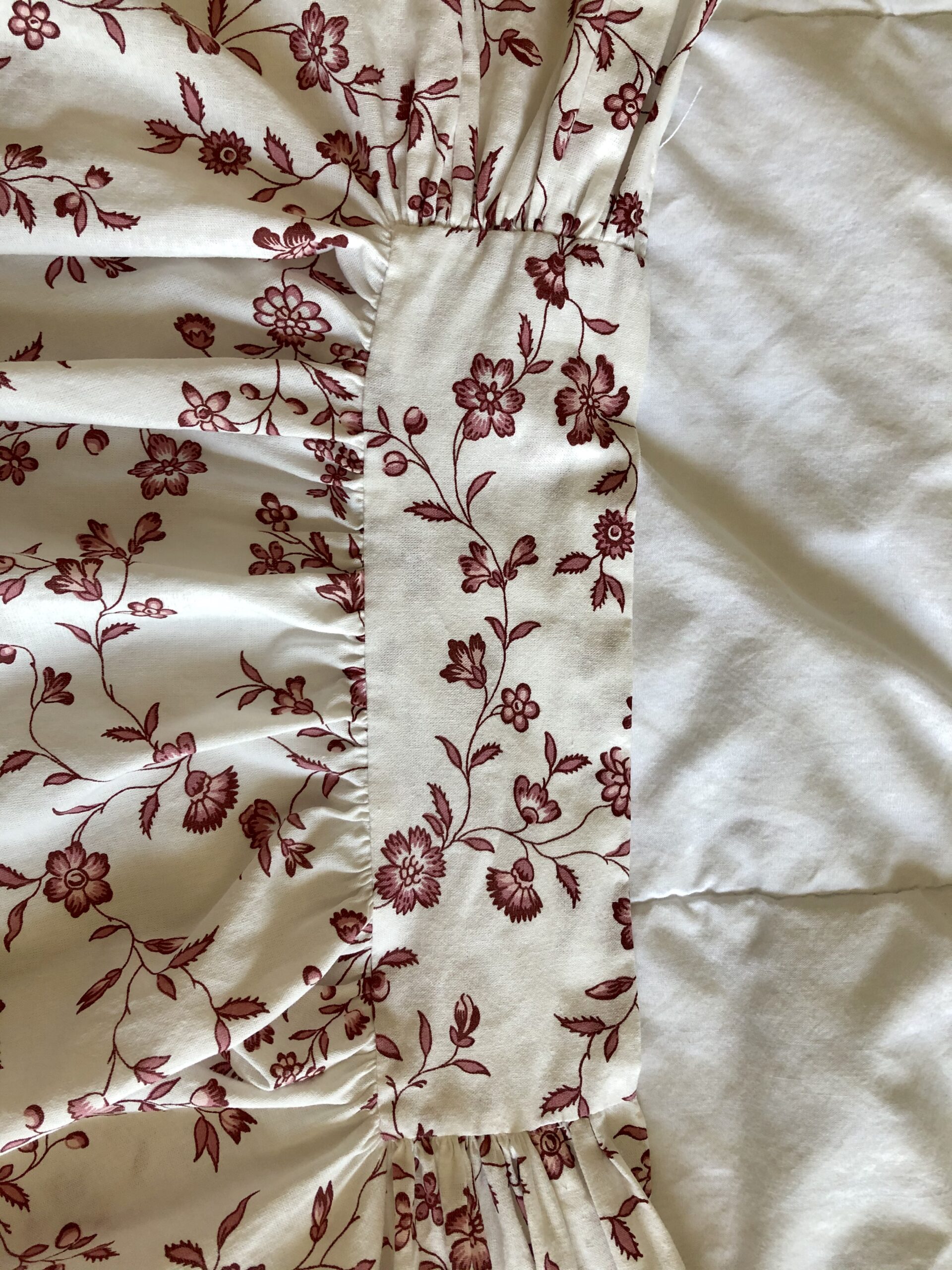
Yoke.
Yoke, yoke,
Yoke, yoke,
Yoke, yoke, yoke,
(Actually, I just like to SAY yoke.)
Then I tried on my new banyan. Upon due consideration, i may have somewhat miscalculated the length of it.
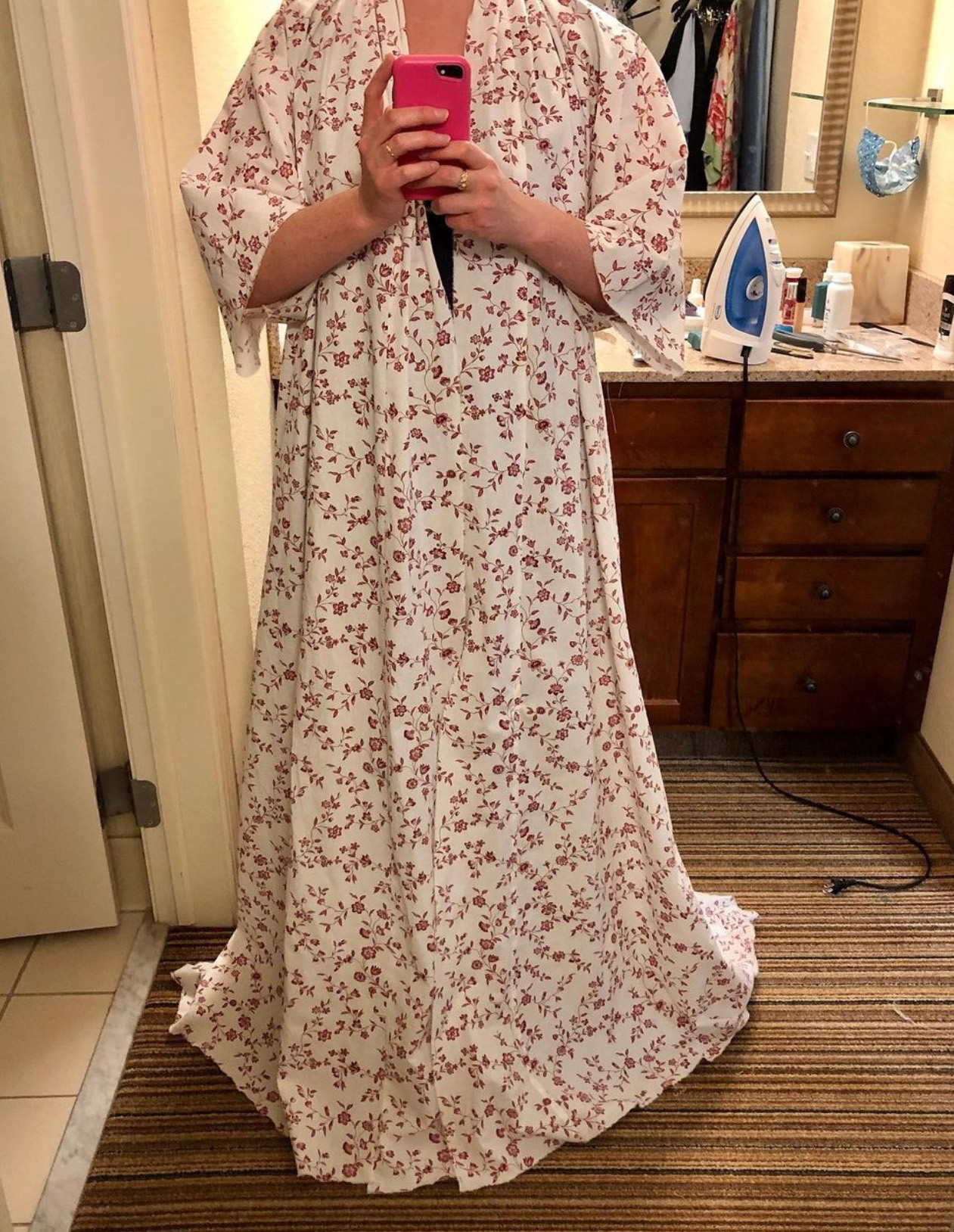
Once excess skirts were chopped off and extra sleeve lengths added on, I felled all of the internal seams,
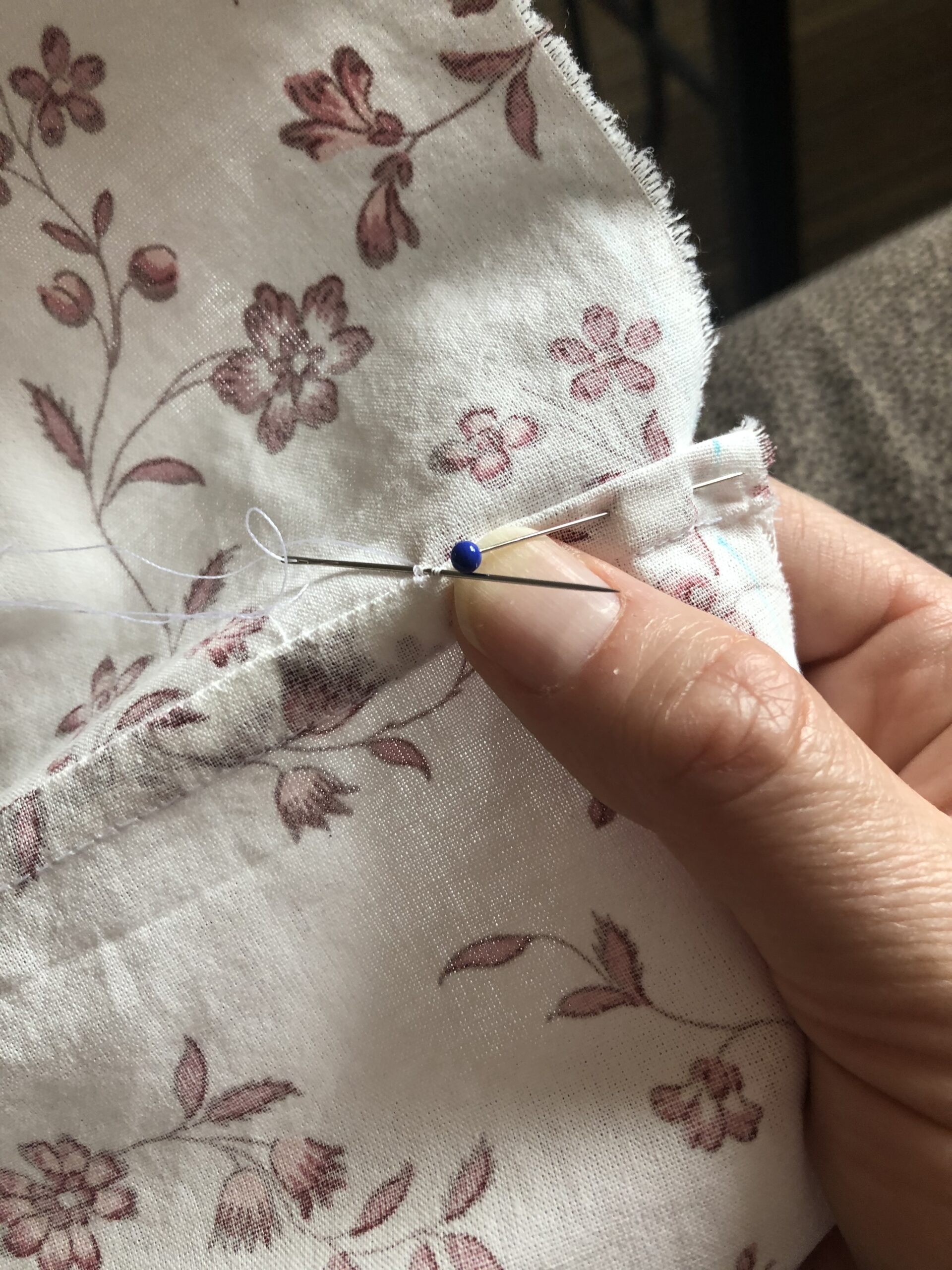
and hemmed the gown – all the way down the fronts and around the bottom. I was learning to do rolled hems at the time, so the entire gown is hemmed in the most delightfully fine 1/8 inch rolled hem!

The Admiring:
And here is my Fitting and Proper Chintz Banyan, courtesy of a pair of gorgeous Rochester hotel bathroom mirror selfies. I considered taking formal glamour shots, but then I realized that my slippers have fuzzy pompoms on the toes, and if that’ isn’t ‘s not glamour, what is?
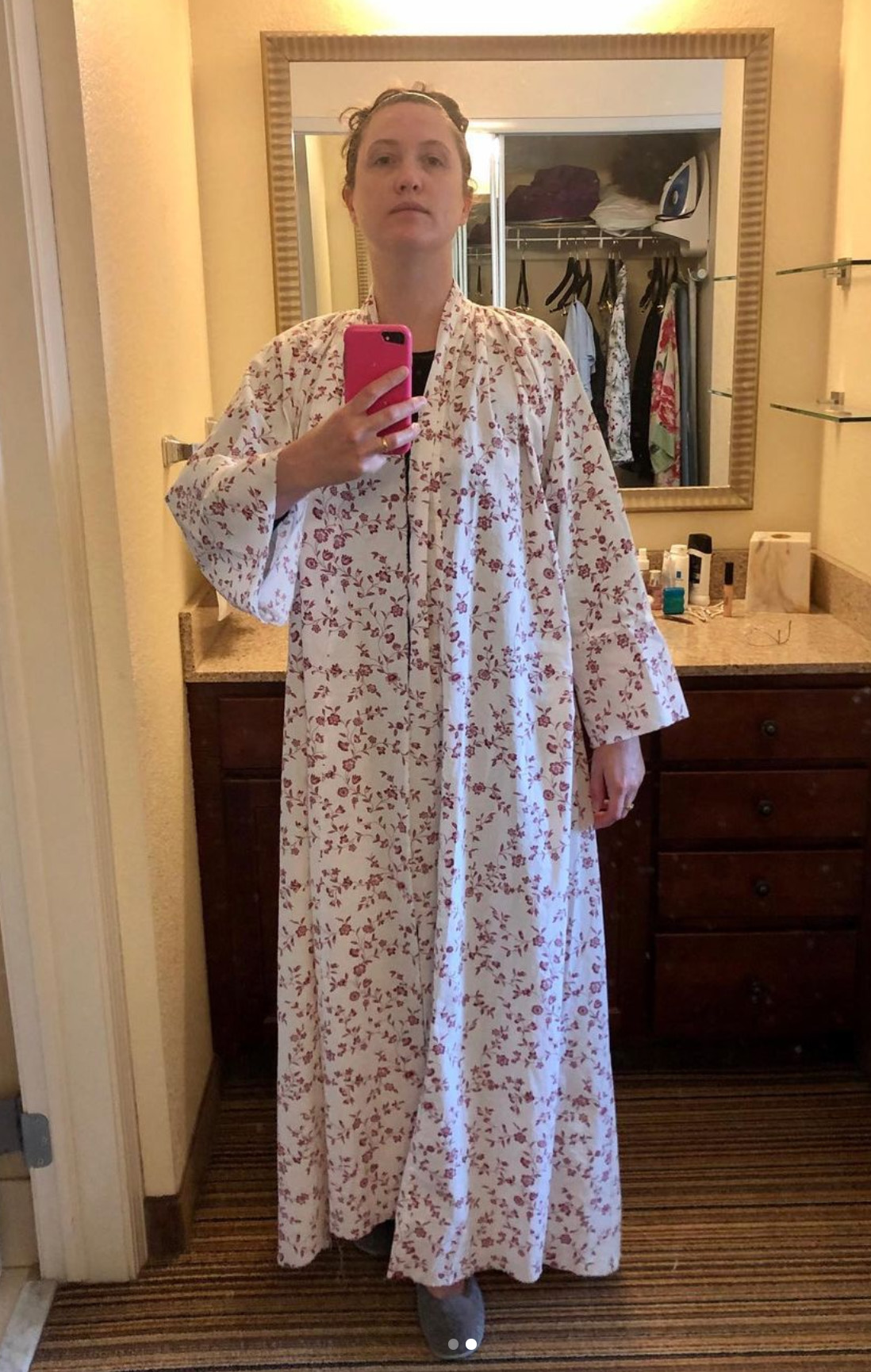
This floral print has a certain essence of Edwardian-dressing-gown about it, but when I move, all that duvet cover material swirls and billows and I feel magisterial and potent. As if I should be messing about with the philosopher’s stone, getting high off of mercury fumes while lightning cracks, thunder rolls, and rain dribbles down the chimney to make the fire smoke.
Amen.

One thought on “The Fitting and Proper Chintz Banyan”